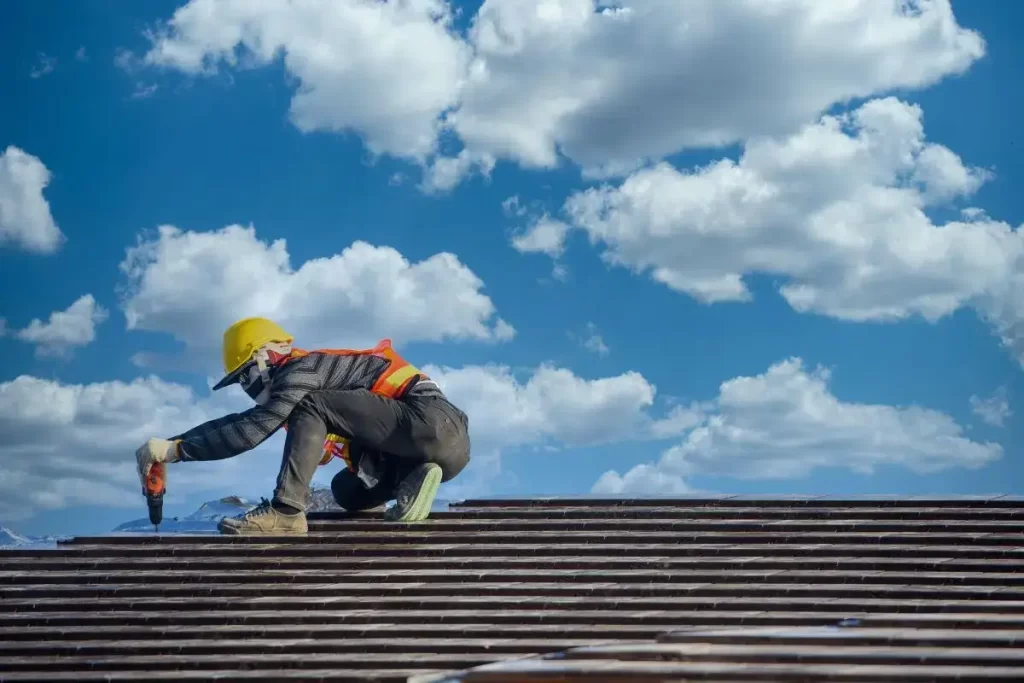When it comes to roofing, understanding the terminology and measurements is crucial for both homeowners and contractors. One of the most fundamental units in roofing is the “square,” which refers to an area of 100 square feet. Knowing how many bundles of shingles are in a square is essential for planning and budgeting any roofing project. This guide aims to provide comprehensive information to help you navigate the complexities of roofing measurements and material requirements.

Understanding Roofing Basics
What is a Roofing Square?
A roofing square is a standardized measurement used across the roofing industry, equivalent to 100 square feet of roof surface. This unit simplifies the process of estimating materials and costs for roofing projects, making it easier for contractors to provide accurate quotes and for homeowners to understand the scope of their projects.
Standard Measurements
Calculating the square footage of a roof involves measuring the length and width of each roof plane and multiplying these dimensions to get the total area. This measurement is crucial for determining how many roofing squares are needed, which in turn affects the number of shingle bundles required.
Types of Roofing Materials
Roofing materials vary widely, with options including asphalt shingles, metal, tile, and more. Asphalt shingles are the most common due to their affordability and durability, while architectural shingles offer a more textured appearance and longer lifespan. Each material type may require a different number of bundles per square, which is an important consideration when planning a roofing project.
How Many Bundles of Shingles Are in a Square?
Standard Calculation
For standard three-tab asphalt shingles, you will typically need three bundles to cover one square. This standard calculation helps in estimating the amount of material required for a roofing project, ensuring that you have enough shingles to complete the job without excessive waste.
Variations by Material
Different types of shingles may require varying numbers of bundles per square. For instance, architectural shingles, which are thicker and have a more dimensional appearance, often require four bundles per square. Luxury shingles can demand even more, sometimes up to six bundles per square, depending on the manufacturer.
Factors Influencing Bundle Count
Several factors can influence the number of bundles needed for a roof, including the size and type of shingles, the roof’s pitch, and the complexity of the design. For example, a steep roof may require more shingles due to the increased surface area.
Calculating Your Needs
Measuring Your Roof Area
To accurately measure your roof area, start by determining the length and width of each roof plane. Multiply these dimensions to get the square footage of each plane, then sum these figures to find the total roof area. This step is crucial for calculating the number of roofing squares needed.
Calculating Squares Needed
Once you have the total square footage, divide this number by 100 to convert it into roofing squares. This calculation provides a clear picture of the amount of material required for your project, helping you plan effectively and avoid shortages.
Determining Bundle Requirements
To determine the number of shingle bundles needed, multiply the number of roofing squares by the standard number of bundles per square for your chosen shingle type. This calculation ensures that you purchase the right amount of material, reducing waste and keeping costs in check.
Additional Considerations
Waste Factor
It’s important to account for waste when calculating your roofing material needs. Typically, an additional 5% of material is recommended to cover waste from trimming edges and fitting around roof features like valleys and ridges. This extra material helps ensure that you have enough shingles to complete the project without running short.
Local Building Codes and Regulations
Local building codes can influence your roofing material choices and quantities. These regulations may dictate specific materials or installation methods, impacting the overall cost and complexity of your project. Always check with local authorities to ensure compliance with relevant codes.
Environmental Factors
The climate in your area can also affect your choice of roofing materials. For instance, regions with heavy snowfall or high winds may require more durable materials to withstand harsh conditions. Consider these environmental factors when planning your roofing project to ensure long-term performance and durability.
Frequently Asked Questions (FAQ)
Common Questions Related to Bundles and Squares
How do I know if I need more than one type of shingle?
Different roof sections may require different shingle types based on exposure to elements or aesthetic preferences. Consult with a roofing professional to determine the best options for your specific needs.
What should I do if my measurements don’t match standard calculations?
If your measurements seem off, double-check your calculations and consider factors like roof pitch and design complexity. It’s often helpful to consult with a professional to ensure accuracy.
Can I install shingles myself, or should I hire a professional?
While DIY installation is possible, hiring a professional ensures that the job is done correctly and safely. Professionals have the experience and tools necessary to handle complex roofing projects.

